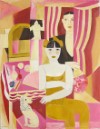 Op het Vlaamse platteland lijken na de Eerste Wereldoorlog de roaring twenties op het eerste gezicht ver weg. Maar wie goed luistert hoort de jazz over de rivier de Leie schallen… De moderne wereld dringt steeds meer door, ook in de schilderijen van Gustave De Smet (1877-1943) en Frits Van den Berghe (1883-1939). Zij behoren tot de belangrijkste schilders van wat in de jaren 1920 het ‘Vlaamse expressionisme’ wordt genoemd, en brengen de moderne figuratieve schilderkunst in België tot een hoogtepunt. Hun individuele oeuvres zijn eigenzinnig maar vertonen samenhang in stijl en visie, zoals de vereenvoudiging van vormen, een sterke nadruk op het landelijke en simpele en een uitgesproken geestigheid. In Kunstmuseum Den Haag staat vooral dit kleurrijke en ondeugende karakter van de Vlaamse expressionisten centraal. De tentoonstelling Vlaams expressionisme – Heerlijke herinneringen geeft tegelijkertijd een overzicht van de Belgische schilderkunst aan het begin van de 20ste eeuw, met naast schilderijen van Gustave De Smet en Frits Van den Berghe ook werken van onder meer Jozef Cantré (1890-1957), Constant Permeke (1886-1952) en Edgard Tytgat (1879-1957).
Op het Vlaamse platteland lijken na de Eerste Wereldoorlog de roaring twenties op het eerste gezicht ver weg. Maar wie goed luistert hoort de jazz over de rivier de Leie schallen… De moderne wereld dringt steeds meer door, ook in de schilderijen van Gustave De Smet (1877-1943) en Frits Van den Berghe (1883-1939). Zij behoren tot de belangrijkste schilders van wat in de jaren 1920 het ‘Vlaamse expressionisme’ wordt genoemd, en brengen de moderne figuratieve schilderkunst in België tot een hoogtepunt. Hun individuele oeuvres zijn eigenzinnig maar vertonen samenhang in stijl en visie, zoals de vereenvoudiging van vormen, een sterke nadruk op het landelijke en simpele en een uitgesproken geestigheid. In Kunstmuseum Den Haag staat vooral dit kleurrijke en ondeugende karakter van de Vlaamse expressionisten centraal. De tentoonstelling Vlaams expressionisme – Heerlijke herinneringen geeft tegelijkertijd een overzicht van de Belgische schilderkunst aan het begin van de 20ste eeuw, met naast schilderijen van Gustave De Smet en Frits Van den Berghe ook werken van onder meer Jozef Cantré (1890-1957), Constant Permeke (1886-1952) en Edgard Tytgat (1879-1957).
Category Archives: 20e eeuw
Heerlijke Herinneringen. Vlaams Expressionisme. Kunstmuseum Den Haag
XiaoXiao Xu. Leven langs de lange muur. Fotomuseum, Den Haag
 De reis van fotografe Xiaoxiao Xu (1984) langs de Chinese Muur resulteerde in twee projecten: Shooting the Tiger (2014) en Watering my Horse by a Spring at the Foot of the Long Wall (2017-2018). De roadtrip van 25.000 kilometer was onderdeel van haar verkenning van het land waar zij oorspronkelijk vandaan komt. Het mededogen van Xu voor de mensen die zij rond de muur ontmoette en de verhalen die zij over hen vertelt, laten een deel van de Chinese cultuur en samenleving zien door de ogen van iemand die er zowel met afstand als met herkenning naar kijkt. Fotomuseum Den Haag presenteert met Leven langs de lange muur Xu’s eerste museale solotentoonstelling.
De reis van fotografe Xiaoxiao Xu (1984) langs de Chinese Muur resulteerde in twee projecten: Shooting the Tiger (2014) en Watering my Horse by a Spring at the Foot of the Long Wall (2017-2018). De roadtrip van 25.000 kilometer was onderdeel van haar verkenning van het land waar zij oorspronkelijk vandaan komt. Het mededogen van Xu voor de mensen die zij rond de muur ontmoette en de verhalen die zij over hen vertelt, laten een deel van de Chinese cultuur en samenleving zien door de ogen van iemand die er zowel met afstand als met herkenning naar kijkt. Fotomuseum Den Haag presenteert met Leven langs de lange muur Xu’s eerste museale solotentoonstelling.
Stedelijk museum meerdere expo’s

Kristyan Sarkis Arabisch schrift

Keith Haring

Niki de St Phalle
Teylers Museum, Haarlem
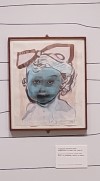
Henry Moore. Vorm en Materiaal. Museum Beelden aan Zee, Scheveningen

De andere Picasso. Terug naar de bron. 50e sterfdag Picasso. Cobra Museum voor moderne kunst- Amstelveen
 In 2023 wordt de 50e sterfdag van Picasso herdacht door tentoonstellingen door de hele wereld, of tenminste heel Europa. In het Cobra Museum doen ze dat met de expositie De andere Picasso. Terug naar de bron. De tentoonstelling toont een minder bekend deel van het oeuvre, waarvan ik toch een groot deel al heb gezien of vergelijkbaars heb gezien, in bijv. Antibes en in Parijs. Maar dat maakt het niet minder de moeite waard.
In 2023 wordt de 50e sterfdag van Picasso herdacht door tentoonstellingen door de hele wereld, of tenminste heel Europa. In het Cobra Museum doen ze dat met de expositie De andere Picasso. Terug naar de bron. De tentoonstelling toont een minder bekend deel van het oeuvre, waarvan ik toch een groot deel al heb gezien of vergelijkbaars heb gezien, in bijv. Antibes en in Parijs. Maar dat maakt het niet minder de moeite waard.
Viering 75 jaar Cobra. Cobra Museum voor moderne kunst. Amstelveen 75 jaar
Het is bizar dat niet lang na de viering van 75 jaar Cobra Museum mogelijk de genadeklap volgt voor het museum. Eeuwig zonde want het museum heeft altijd erg fijne tentoonstellingen.
Met de viering van 75 jaar Cobra stellen ze werken tentoon van Picasso, Appel, Constant, Corneille maar ook Basquiat en Pollock. Een erg mooie expo.
Celébration Picasso, la collection prend des couleurs. Musée Picasso, Parijs, Frankrijk
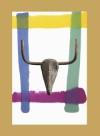 It is fifty years since Pablo Picasso died, on 8 April 1973 at Notre-Dame-de-Vie, his home in Mougins. The body of work that he left behind had a profound impact on the entire 20th century.
It is fifty years since Pablo Picasso died, on 8 April 1973 at Notre-Dame-de-Vie, his home in Mougins. The body of work that he left behind had a profound impact on the entire 20th century.
For this anniversary year, the Musée National Picasso-Paris has invited the British designer Sir Paul Smith, known for his work with colour, tailoring and unexpected details, to lead the artistic direction of an exceptional exhibition showcasing the museum’s collection.
This exhibition created in collaboration with Sir Paul Smith is curated around masterpieces from the collection. The designer’s unique approach to the works invites the public to view them through a contemporary lens and underlines the continuing relevance of Picasso’s work in today’s world. The visions of these two artists sometimes converge, for example around their shared love of objects, dress and playfulness, thus leading to comparisons and a spectacular, highly inventive approach to the presentation of the works.
Also on show throughout the exhibition are works by contemporary international artists. In their shared desire to open up new interpretations to Picasso’s work, Guillermo Kuitca, Obi Okigbo, Mickalene Thomas and Chéri Samba interrogate his image and putting their own slant on some of his artistic innovations.
Centaur, César. Place Michel Debré, Parijs, Frankrijk
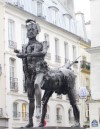
Tuileries, Parijs, Frankrijk
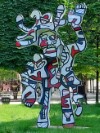 Een wandeling door de Tuileries tuinen leverde een aantal bijzondere kunstwerken op, die ik er niet eerder zag. De Henri Moore was verdwenen, maar er waren wel werken van Jean Dubuffet, Germaine Richier en Louise Bourgeois. Een verrassend leuke wandeling dus.
Een wandeling door de Tuileries tuinen leverde een aantal bijzondere kunstwerken op, die ik er niet eerder zag. De Henri Moore was verdwenen, maar er waren wel werken van Jean Dubuffet, Germaine Richier en Louise Bourgeois. Een verrassend leuke wandeling dus.
Bouqet de Tulipes – Jeff Koons. Petit Palais, Parijs, Frankrijk
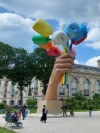 In de tuin achter het Petit Palais in Parijs staat een enorme hand met een bos tulpen. Een kadootje van kunstenaar Jeff Koons aan de bewoners van Parijs na de aanslagen in 2015 en 2016. Prachtig gezicht, omdat het volledig geïntegreerd is in de functionaliteit van de openbare ruimte, maar er toch ook enorm uitspringt.
In de tuin achter het Petit Palais in Parijs staat een enorme hand met een bos tulpen. Een kadootje van kunstenaar Jeff Koons aan de bewoners van Parijs na de aanslagen in 2015 en 2016. Prachtig gezicht, omdat het volledig geïntegreerd is in de functionaliteit van de openbare ruimte, maar er toch ook enorm uitspringt.
La Fabuloserie – Halle Saint Pierre, Parijs, Frankrijk
 Deze jubileumdatum is voor de Halle Saint Pierre de gelegenheid om de collectie te vieren die Alain en Caroline Bourbonnais vanaf 1972 met onverzadigbare passie verzamelden, eerst in Parijs in het Atelier Jacob en vervolgens in Dicy in Bourgondië, op een landgoed omgebouwd tot woonhuismuseum en een bewoond tuin. Een collectie geïnspireerd op art brut die, als ze de oorspronkelijke aanpak van Jean Dubuffet voortzet, er vrijelijk van afwijkt om de uitstraling, smaak en gevoeligheid van de oprichters op te leggen. Op het kruispunt van rauwe kunst, naïeve kunst en populaire kunst, ook open voor buitenwesterse culturen, heeft de buitengewone kunst van La Fabuloserie nooit opgehouden makers van bijzondere werken te verwelkomen zonder esthetische zorgen, die zichzelf niet noemen of zichzelf beschouwen als kunstprofessionals.
Deze jubileumdatum is voor de Halle Saint Pierre de gelegenheid om de collectie te vieren die Alain en Caroline Bourbonnais vanaf 1972 met onverzadigbare passie verzamelden, eerst in Parijs in het Atelier Jacob en vervolgens in Dicy in Bourgondië, op een landgoed omgebouwd tot woonhuismuseum en een bewoond tuin. Een collectie geïnspireerd op art brut die, als ze de oorspronkelijke aanpak van Jean Dubuffet voortzet, er vrijelijk van afwijkt om de uitstraling, smaak en gevoeligheid van de oprichters op te leggen. Op het kruispunt van rauwe kunst, naïeve kunst en populaire kunst, ook open voor buitenwesterse culturen, heeft de buitengewone kunst van La Fabuloserie nooit opgehouden makers van bijzondere werken te verwelkomen zonder esthetische zorgen, die zichzelf niet noemen of zichzelf beschouwen als kunstprofessionals.
Faith Ringgold. Musée Picasso, Parijs, Frankrijk
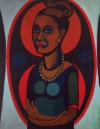 Ik kende de zwarte Amerikaanse Faith Ringgold en haar werken nog niet. Maar poeh, wat een mooie en indrukwekkende exposities was het, in het Picasso Museum in Parijs. Met schilderen, maskers en (wand)tapijten een rijke verzameling. En allemaal met een stuk historie. De moeite meer dan waard.
Ik kende de zwarte Amerikaanse Faith Ringgold en haar werken nog niet. Maar poeh, wat een mooie en indrukwekkende exposities was het, in het Picasso Museum in Parijs. Met schilderen, maskers en (wand)tapijten een rijke verzameling. En allemaal met een stuk historie. De moeite meer dan waard.
Matisse, Cahiers d’art, the pivotal 1930’s. Musée l’Orangerie. Parijs, Frankrijk
 In Musée l’Orangerie ben ik intussen meer keren geweest dan ik me kan herinneren. De eerste keer kwam ik er uiteraard voor de waterlelies van Monet, maar ook de collectie in de souterrain van het gebouw is altijd de moeite waard. En natuurlijk de tijdelijke exposities, zoals deze van Matisse. Een mooie aanvulling op alle culturele uitstapjes deze week. En stiekem blijf ik de odalisken toch het mooist vinden.
In Musée l’Orangerie ben ik intussen meer keren geweest dan ik me kan herinneren. De eerste keer kwam ik er uiteraard voor de waterlelies van Monet, maar ook de collectie in de souterrain van het gebouw is altijd de moeite waard. En natuurlijk de tijdelijke exposities, zoals deze van Matisse. Een mooie aanvulling op alle culturele uitstapjes deze week. En stiekem blijf ik de odalisken toch het mooist vinden.
Germaine Richier. Centre Pompidou. Parijs, Frankrijk
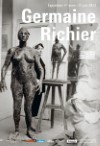 Prachtige expositie van kunstenaar Germaine Richier in het Centre Pompidou. Ik zag voor het eerst werken van Richier in Antibes in Zuid-Frankrijk, in het Picasso museum daar en was meteen verkocht. Deze expositie paste dan ook precies in mijn straatje. Wat een schitterende sculpturen.
Prachtige expositie van kunstenaar Germaine Richier in het Centre Pompidou. Ik zag voor het eerst werken van Richier in Antibes in Zuid-Frankrijk, in het Picasso museum daar en was meteen verkocht. Deze expositie paste dan ook precies in mijn straatje. Wat een schitterende sculpturen.
Basquiat x Warhol, à quatre mains. Fondation Louis Vuitton, Parijs, Frankrijk
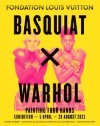
Between 1984 and 1985, Jean-Michel Basquiat (1960-1988) and Andy Warhol (1928-1987) created around 160 paintings together in tandem, “à quatre mains”, including some of the largest works produced during their respective careers. Keith Haring (1958-1990), who witnessed their friendship and collaboration production, would go on to speak of a “conversation occurring through painting, instead of words,” and of two minds merging to create a “third distinctive and unique mind.”
“Basquiat × Warhol. Painting four hands” is the most important exhibition ever dedicated to this extraordinary body of work and brings together more than three hundred works and documents including eighty canvases jointly signed by the two artists. Also featured are individual works by each as well as a set of works by other major artists (Futura 2000, Michael Halsband, Keith Haring, Jenny Holzer, Kenny Scharf……) in order to evoke the energy of the New York downtown art scene of the 1980s.
The exhibition will open with a series of portraits of Basquiat by Warhol and of Warhol by Basquiat. It will continue with the early collaborations. These works, initiated by the two artists’ dealer, Bruno Bischofberger, benefited from a collaboration with the Italian artist, Francesco Clemente (born in 1952). After completing these 15 paintings together with Clemente, Basquiat and Warhol pursued their collaboration on an almost daily basis, with enthusiasm and complicity. The energy and force of their incessant exchanges will be the driving force of the exhibition, running through all of the galleries in the Foundation featuring highlights such as the monumental sculpture Ten Punching Bags (Last Supper) or the 8 meter canva African Mask.
Basquiat admired Warhol as an elder, a key art world personality, and the pioneer of a new language and of a groundbreaking relationship to pop culture. Warhol, in turn, found in Basquiat a renewed interest in painting. Thanks to him, he went back to painting manually on a very large scale. Warhol’s subjects (newspapers, logos of General Electric, Paramount and the Olympic Games) serve as the basis for whole series of artworks that will punctuate the exhibition.
Kees van Dongen. Singer, Laren
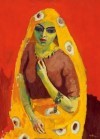 Van Dongen is een van de meest bekende kunstenaars van de twintigste eeuw, samen met grootheden als Matisse, Braque en Picasso. Hij was enorm ambitieus. In de tentoonstelling krijgt u een compleet beeld van de kennis en kunde van deze publiekslieveling van Singer Laren. U wordt stap voor stap meegenomen op de weg die Van Dongen aflegt richting succes.
Van Dongen is een van de meest bekende kunstenaars van de twintigste eeuw, samen met grootheden als Matisse, Braque en Picasso. Hij was enorm ambitieus. In de tentoonstelling krijgt u een compleet beeld van de kennis en kunde van deze publiekslieveling van Singer Laren. U wordt stap voor stap meegenomen op de weg die Van Dongen aflegt richting succes.
Welt in Aufruhr. Chagall – Schirn, Frankfurt, Duitsland
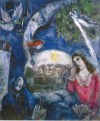
Marc Chagall (1887–1985) gilt als einer der bedeutendsten Künstler der Moderne. Die SCHIRN widmet ihm nach 15 Jahren erstmals wieder eine groß angelegte Ausstellung in Deutschland: CHAGALL. WELT IN AUFRUHR beleuchtet eine bislang wenig bekannte, aber wichtige Seite seines Schaffens – die Werke der 1930er- und 1940er-Jahre, in denen sich seine farbenfrohe Palette zunehmend verdunkelt.
Als jüdischer Maler war Chagall durch das nationalsozialistische Regime einer existentiellen Bedrohung ausgesetzt. Bereits in den frühen 1930er-Jahren verarbeitete er den immer aggressiver werdenden Antisemitismus und emigrierte 1941 schließlich in die USA. Sein künstlerisches Schaffen in diesen Jahren berührt zentrale Themen wie Identität, Heimat und Exil. Mit rund 60 eindringlichen Gemälden, Papierarbeiten und Kostümen zeichnet die Ausstellung die Suche des Künstlers nach einer Bildsprache im Angesicht von Vertreibung und Verfolgung nach. In der Zusammenschau ermöglicht die SCHIRN eine neue und äußerst aktuelle Perspektive auf das Œuvre eines der wichtigsten Künstler des 20. Jahrhunderts.
Niki de Saint Phalle – Schirn, Frankfurt, Duitsland
 Altijd fijn om een expositie van Niki de St Phalle te vinden. En deze was dan ook nog eens uitgebreid en divers. Wat een verrassing. Enkele werken had ik elders al gezien (in Hannover bijvoorbeeld, of in Mons, in België of Dortmund) maar ze zijn altijd weer even indrukwekkend en ‘food for thought’ bij het leven van De St Phalle.
Altijd fijn om een expositie van Niki de St Phalle te vinden. En deze was dan ook nog eens uitgebreid en divers. Wat een verrassing. Enkele werken had ik elders al gezien (in Hannover bijvoorbeeld, of in Mons, in België of Dortmund) maar ze zijn altijd weer even indrukwekkend en ‘food for thought’ bij het leven van De St Phalle.
Sammlung Scharf-Gerstenberg – Berlijn, Duitsland
Kleine maar fijne expositie van het Berggruen Museum in de Sammlung Scharf-Gerstenberg.
While the Museum Berggruen is closed for major renovations, and a large section of the collection is on tour, the Sammlung Scharf-Gerstenberg has made museum space available on it’s first upper level to show a small but representative selection of Berggruen works. In addition to Alberto Giacometti’s Katze (Cat, 1951), which found its place inside the Stüler building entrance, works by Pablo Picasso, Paul Klee, Henri Matisse and Paul Cézanne now hang on the walls around Giacometti’s Große stehende Frau III (Large Standing Woman III, 1960).
Early Contact with the Surrealists
Three of these artists – Giacometti, Picasso and Klee – were in contact with the Surrealists, who are now the main emphasis of the Sammlung Scharf-Gerstenberg. In works such as Klee’s Frau R. auf Reisen im Süden (Frau R. Travelling in the South, 1924) and Picasso’s Bildnis Nusch (Portrait of Nusch, 1937), the eyes ‒ which the Surrealists paid special attention to like hardly another part of the body ‒ are the focus of the images.
Portraits of Women
Another small group of works takes portraits of women as its subject: Cézanne’s Junges Mädchen mit offenem Haar (Young Girl with Loose Hair, 1873‒74), Picasso’s Frau in einem Sessel (Woman in an Armchair, 1939), Klee’s Rotes Mädchen mit gelbem Topfhut (Red Girl with Yellow Pot Hat, 1919) and Matisse’s portrait of Lorette (1917).
